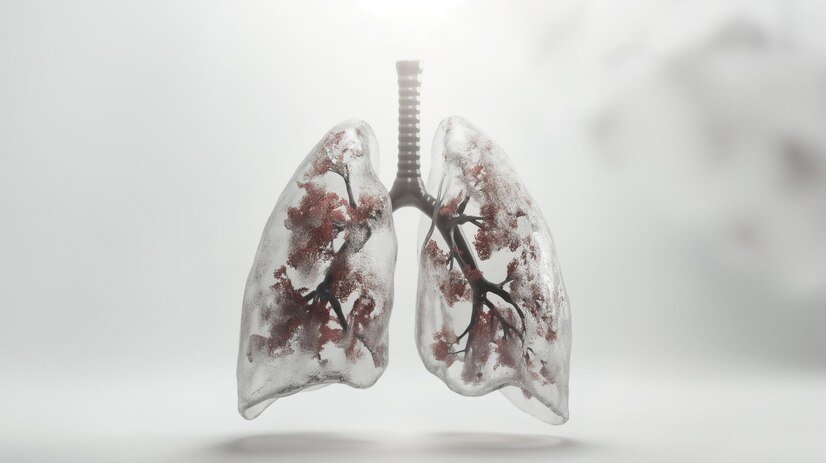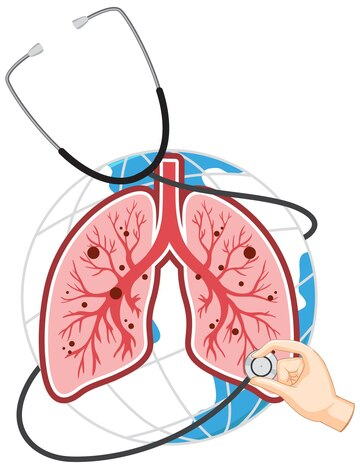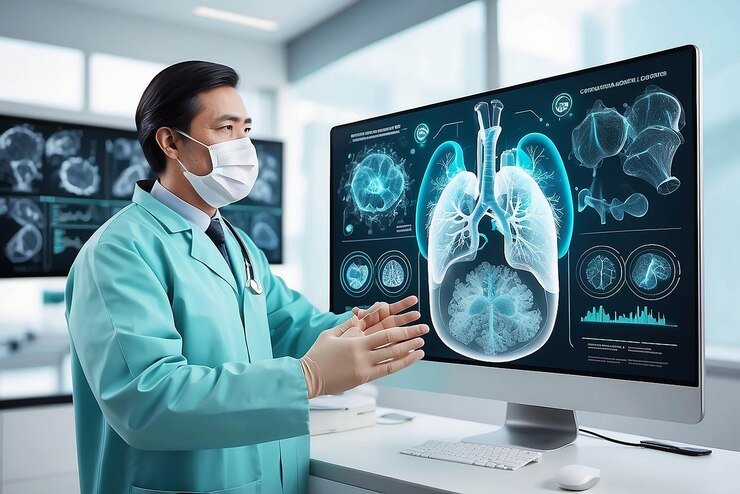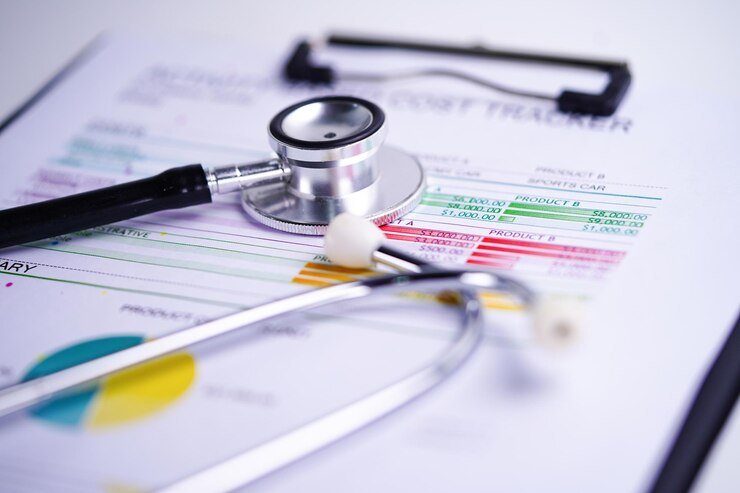Pulmonologist
Pulmonologist

Pul monologist iMedBilling
Pulmonologists are physicians who specialize in managing multiple range of respiratory disorders such as asthma, Chronic-Obstructive-Pulmonary-Disease (COPD), bronchitis, and lung cancer. They utilize advanced diagnostic techniques to assess and monitor lung health, including pulmonary function tests, chest imaging, and bronchoscopy. Pulmonologists often work closely with other specialists to provide detailed care for patients with complex respiratory issues. They also play a crucial role in critical care settings, managing patients with severe respiratory failure and those requiring mechanical ventilation. Pulmonary rehabilitation and lifestyle counseling are integral parts of their approach to improving patients' quality of life. The field continually evolves with advancements in medical technology, such as robotic-assisted procedures, enhancing diagnostic accuracy and treatment efficacy. Pulmonology addresses acute and chronic conditions and emphasizes preventive measures to maintain optimal respiratory health. Through their expertise, pulmonologists significantly contribute to the overall well-being of individuals by ensuring they breathe easier and live healthier lives.


Overview of Pulmonology Services
Pulmonology services focus on the health of the respiratory system, including the lungs and breathing passages. These services include diagnosing, treating, and managing various lung and respiratory conditions. Pulmonologists and lung specialists use advanced technologies and techniques to help patients improve their breathing and overall lung function. The goal is to provide detailed care that addresses acute and chronic respiratory issues, utilizing the latest medical advancements and personalized treatment plans
Pulmonologist

Conditions and Consultations
Pulmonologists provide consultations to diagnose and manage a wide range of lung-related conditions. During consultations, they assess symptoms and medical history and perform crucial tests to determine the underlying cause of respiratory issues. Common conditions treated include
Chronic-Obstructive Pulmonary-Disease
A progressive disease categorized by long-term breathing problems and poor airflow.

Detailed Components

Asthma
A condition in which airways may be narrow and swell, producing extra mucus and causing difficulty in breathing

Cystic Fibrosis
A genetic disorder touching the lungs and digestive system, leading to thick, sticky mucus buildup

Emphysema
is a type of C.O.P.D involving damage to the lungs' alveoli (air sacs), leading to breathing difficulties

Lung Nodules
Small growths in the lungs, which can be benign or malignant. Infection causing inflammation of the air sacs in one or both lungs.

Sleep Disorders
Conditions like sleep apnea that disrupt breathing during sleep.
Diagnosis and Treatments
After initial consultations, patients may undergo further diagnostic testing to identify lung conditions accurately. Standard diagnostic tools and treatments include:
Lung Screening: Detects early-stage lung cancer in asymptomatic individuals through imaging, such as low-dose CT scans.
Pulmonary Function Testing: Measures lung capacity, volume, and flow rates to diagnose lung diseases.
Pulmonary Rehabilitation: A structured program combining exercise, education, and support to improve respiratory health in chronic lung disease patients.



Pulse Oximetry Screening
A noninvasive test that measures the oxygen saturation level in the blood, often done at home or in a clinical setting.
Robotic-Assisted Bronchoscopy: A minimally invasive procedure using a robotic system to examine the lungs, obtain tissue samples, biopsy nodules, and remove foreign bodies.
Upper Airway Stimulation Therapy: A surgical treatment for obstructive sleep apnea that involves implanting a device to stimulate airway muscles and keep the airway open during sleep.

Pulmonology Specialists
The care team in pulmonology typically includes a variety of healthcare professionals, each playing a vital role in patient care
-
Pulmonologists
Medical doctors who specialize in the respiratory system, responsible for diagnosing and treating lung diseases and conditions
-
Physician Assistants (PAs)
Licensed professionals who work under the supervision of pulmonologists, performing exams, diagnosing conditions, and assisting in treatment plans
-
Nurse Practitioners (NPs)
Advanced practice nurses who provide comprehensive care, including diagnosing and managing respiratory conditions, prescribing medications, and educating patients.
-
Technicians
Specialists such as respiratory therapists who perform diagnostic tests, manage ventilators, and assist with treatments like pulmonary function testing
-
Registered Nurses
Registered nurses and specialized respiratory nurses who provide direct patient care, educate patients on managing their conditions, and support the medical team in treatment plans



Pulmonology Diagnostic Tools and Treatments
Pulmonary function tests (PFTs) are essential diagnostic tools used to evaluate lung disorders. These non-invasive tests measure how well your lungs function, assessing their capacity and efficiency. There are two primary types of PFTs: spirometry and plethysmography.
Several treatment options are available for managing pulmonary diseases.
For patients with COPD, the pulmonary rehabilitation program is a valuable option. This exercise-based program focuses on teaching patients how to breathe more effectively and prevent further lung damage. Typically, patients participate in the program for about two hours, three times a week, over the course of a month.

Pulmonology CPT Codes
Pulmonology, the branch of medicine focused on the respiratory system, utilizes various CPT (Current Procedural Terminology) codes for billing purposes. These codes are essential for documenting services provided and ensuring proper reimbursement.
Here are the commonly used CPT codes in pulmonology
Spirometry, including graphic record, total and timed vital capacity, and expiratory flow rate measurement(s), with or without maximal voluntary ventilation
Bronchospasm evaluation; spirometry as in 94010, before and after bronchodilator (aerosol or parenteral).
Vital capacity, total (separate procedure).
Maximum breathing capacity, maximal voluntary ventilation
Expired gas collection, quantitative, single procedure.
Respiratory flow volume loop.
Breathing response to CO2 (CO2 response curve).
Pulmonology CPT Codes
Pulmonology, the branch of medicine focused on the respiratory system, utilizes various CPT (Current Procedural Terminology) codes for billing purposes. These codes are essential for documenting services provided and ensuring proper reimbursement.
Here are the commonly used CPT codes in pulmonology
Breathing response to hypoxia.
Pressurized or non-pressurized inhalation treatment for acute airway obstruction or sputum-induction for diagnostic purposes
Continuous inhalation treatment with aerosol medication for acute airway obstruction; first hour.
Demonstration and evaluation of patient utilization of an aerosol generator, or nebulizer, or metered dose inhaler, or IPPB device.
Plethysmography for determination of lung volumes
Gas dilution or washout for determination of lung volumes and, when performed, distribution of ventilation and closing volumes
Pulmonary compliance study (e.g., pleural pressure determination and graphic recording).

Related Modifiers
Modifiers are two-digit codes added to CPT codes to provide additional information about the service. They help accurately describe the procedure and any particular circumstances. Common modifiers used in pulmonology include:
- 25: Significant or separately identifiable E&M service by the same provider on the same day with same or other service.
Example: When a pulmonologist performs a spirometry (94010) and provides a significant E/M service.
- 26: Professional component, indicating that the service provided was only the interpretation of the diagnostic test.
Example: When a pulmonologist interprets a spirometry test performed by a technician.
- 52: Reduced services, indicating that a service was partially reduced and eliminated at the physician's discretion.
Example: When a pulmonary function test is partially completed due to patient intolerance.
- 59: Distinct procedural service, indicating that procedures usually bundled together were performed separately.
Example: When multiple pulmonary function tests are performed on the same day but are distinct and necessary.



Related Modifiers
- 76: Repeated procedure or service by the same physician or other health care professional.
Example: When a patient needs a repeat spirometry test due to an initial inconclusive result.
- 77: Repeat procedure by another physician.
Example: When a second pulmonologist repeats a diagnostic test initially performed by another physician for confirmation.
- 91: Repeat clinical diagnostic laboratory test, indicating that repeated test was on the same day to obtain subsequent results.
Example: Repeated pulse oximetry tests throughout the day to monitor a patient's oxygen saturation levels.
- GA: Waiver of liability statement issued as required by payer policy, individual case.
Example: When an Advanced Beneficiary Notice (ABN) is issued to a Medicare patient before performing a test not covered by Medicare.



Importance of Correct Coding and Modifiers
Stay Updated: Regularly update coding knowledge to reflect changes in CPT codes and guidelines.
Accurate Documentation: Ensure all procedures, tests, and services are thoroughly documented in the patient's medical record.
Training: Invest in regular exercises for billing staff to handle the complexities of pulmonology billing.
Preauthorization: Verify insurance coverage and obtain necessary preauthorizations to avoid payment issues.
Audit: Conduct regular audits of billing practices to identify and correct discrepancies or errors.
Following these guidelines and maintaining meticulous records, pulmonology practices can optimize billing processes, reduce errors, and improve financial health.


At iMedbillingPro, we are aware of the challenges and suffering that healthcare providers encounter when delivering first-rate patient care.
Copyright © 2024 iMed Billing Pro All Rights Reserved.

